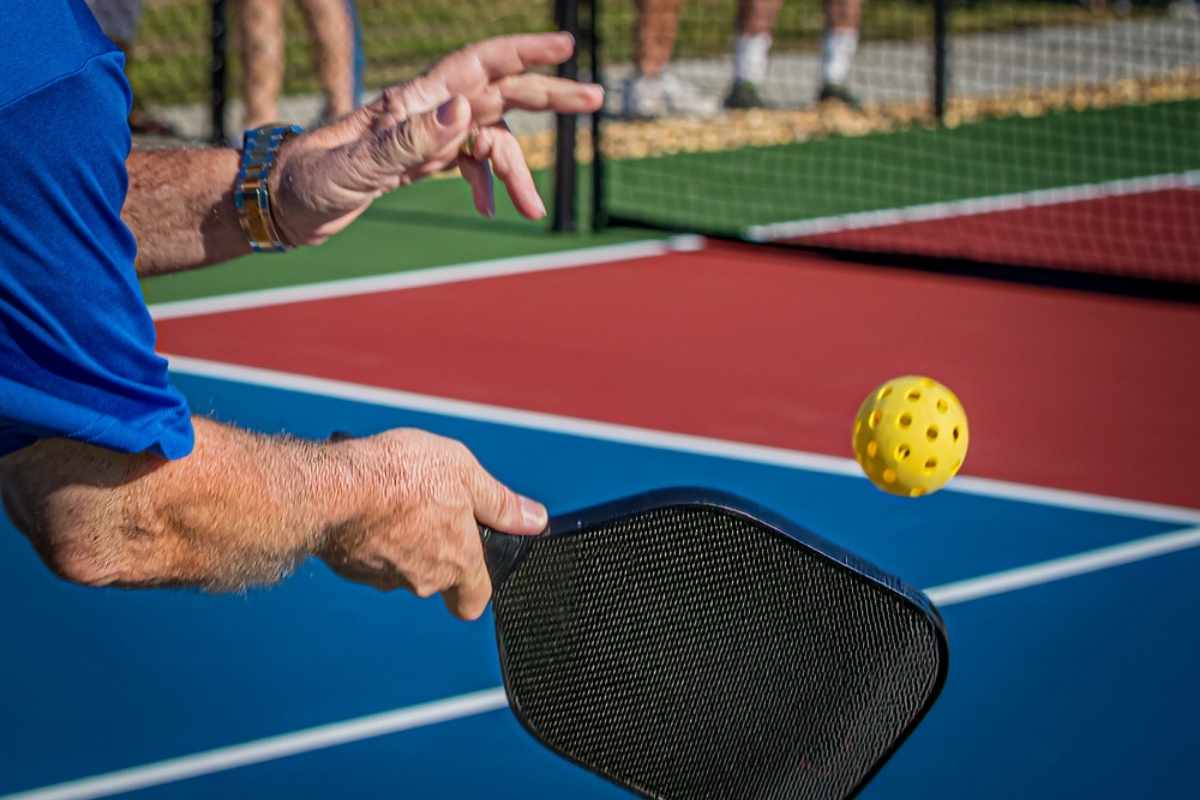
If you’re new to playing pickleball, one of the first things you need to learn is how to hold your paddle. A firm grip ensures that you stay in control during your game and play your best while remaining comfortable. Here are the top three grips for pickleball you should be practicing!
Best Grips For Pickleball

Three main grips are used in pickleball: the Continental grip, the Western grip, and the Eastern grip. Each of these has its pros and cons, so it is important that you practice each one! This will help you become familiar with each grip and know when to use it.
These grips have slight variations, but all pickleball grips fall under these larger headings. Using the right grip in pickleball is important because it will help you set for each shot. Each has its advantages and disadvantages in the game, providing more power for a specific setup or shot.
Using the proper grip for the right play will optimize your power.
1. Eastern Grip

The Eastern grip is the most common grip used in pickleball. It is especially useful for beginners who are just getting the feel of the game and the paddle. This is because the Eastern grip is neutral, meaning that it can be used for both forehand and backhand shots.
This, in turn, takes out the extra skill and effort needed to switch grip positions between shots. That’s why you will see most, if not all, amateur players using this grip. The Eastern grip is done by holding the pickleball paddle out in front of you with its face toward your dominant hand.
Use this hand to slide down the paddle face and grip the handle firmly. The Eastern grip is sometimes called the handshake grip because your hand is positioned as for a handshake. Your index finger may be slightly extended toward the paddle.
Pros of Eastern Grip
- Easy for beginners
- It can be used for both forehand and backhand shots, so there is no need to change your grip between sets
- Well-suited for dinking
Cons of Eastern Grip
- Less powerful than other grips
- May inhibit reach
- Emphasizes wrist position in backhand volleys
2. Continental Grip

The continental grip is sometimes referred to as the hammer grip, and the reason is evident when you see how it is done. To use a continental grip, grasp the paddle handle as though you are picking up a hammer to strike a nail. Some people learn it by thinking of it as a rotated eastern grip, with the V between your thumb and forefinger turned slightly toward your dominant side.
The Continental grip is an excellent choice for dinking and backhand shots. However, you may find it difficult to use for forehand; it allows for more power to come from a backhand swing and weakens the position of the arm in a forehand shot. Some players use this knowledge to their advantage when playing an opponent who uses a Continental grip.
By directing their shots, they can force their opponent to deliver forehand shots, which weakens their delivery and forces them into an awkward position.
Pros of Continental Grip
- Allows for powerful backhand swings
- Good for reach
- Offers offensive advantages
Cons of Continental Grip
- Not well-suited to forehand shots
3. Western Grip

The Western grip is slightly less common on the pickleball court. It is sometimes called the Frying Pan grip since the paddle is held a bit like a frying pan while flipping a pancake. To use a Western grip, start with an Eastern grip and rotate the paddle 60 to 90 degrees.
The key difference is that you grip the handle on the opposite of your dominant side. In other words, if you are right-handed, grasp the handle from the left. The Western grip makes it easy to deliver powerful forehand shots and even achieve a nice spin.
However, it puts you at an awkward angle when attempting backhand shots, which is why you won’t see it used as commonly as the other grip variations.
Pros of Western Grip
- Good reach and power, especially for forehand shots
- Good for achieving spin
Cons of Western Grip
- Reduces power and reach in backhand shots
Other Pickleball Grip Variations
Though these three main types are by far the most widely used and recognized, there are subcategories below them. Some of these are still becoming more widely known as the game of pickleball continues to develop, so don’t be surprised if you hear a player mention a grip variation that you don’t recognize. These include, but aren’t limited to:
- Table Tennis V grip
- Two-handed backhand grip
- Semi-Western grip
Where Should You Grip The Pickleball Paddle?

Most players grip their paddle in the middle of the handle, close enough to the paddle to touch it with the tips of their fingers. While there is no official rule for holding the paddle, this is generally considered the best way to deliver powerful but controlled shots. Some players hold the paddle so that the handle is at the end of their palm, which may improve reach and power.
Others prefer to extend a finger over the back of the paddle. Learning the grip that works best for you is one of the first steps of the game.
How Should You Choose Your Grip?

Ultimately, choosing your preferred pickleball grip is up to you. It is a good idea to practice each one. But as you become a better player, you are likely to fall into the habit of using one grip.
This is simply part of the game, but it also shows how important it is to choose your grip carefully — because, as they say, old habits die hard.

